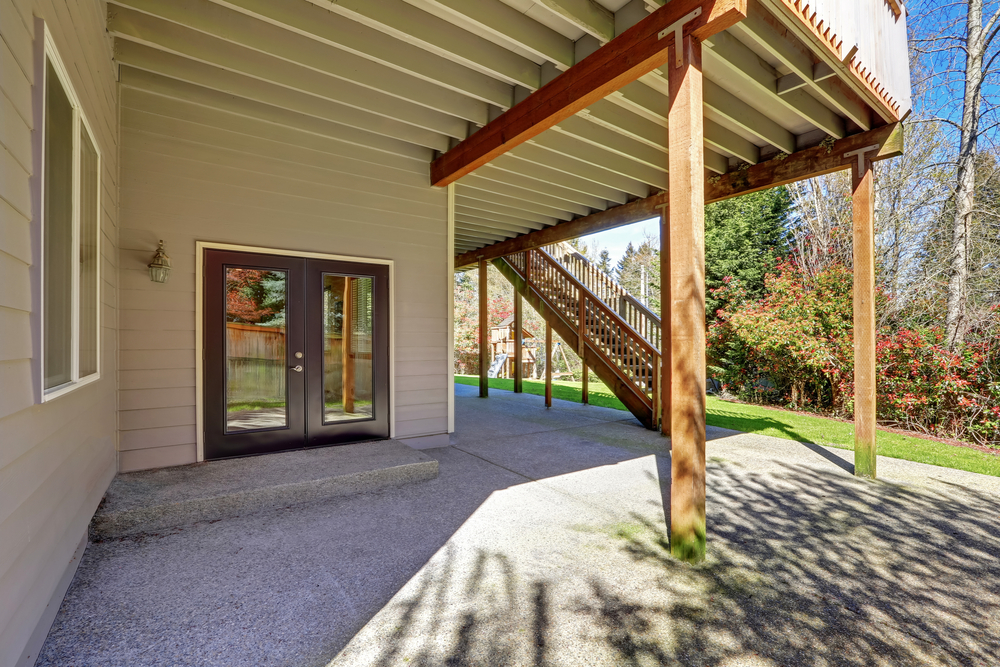
To build an elevated deck, you will need several components. These include a ledger attached to the house, piers (precast concrete pyramids that rest on in-ground footings), and posts. These will help hold up the deck and prevent water damage. The post anchors are used to secure the posts to the piers.
Flashing
The flashing around the edges is one of the most critical elevated deck components. It prevents water from seeping into the deck from underneath and protects it from wind penetration. Moreover, it prevents the deck from deteriorating, which can be costly and time-consuming to repair. Most decks are not properly flashed, and this has a negative effect on the life of the deck. However, the process of flashing is becoming easier with the introduction of self-adhesive membranes. Another option is metal flashing, which comes in copper, stainless steel, and coated aluminum. The flashing should be made of fireproof material with vents on all sides.
Railing
Considering building a deck on your property, consider adding a railing system. This will help you stay safe while you enjoy your deck. The railings can be made of lumber, composite materials, or Trex. The posts will be covered with post caps, which can be made of wood, metal, or composite materials. You can also find specialty post caps with decorative elements. A railing system will span the perimeter of your deck and protect your family and guests.
Stringers
Stringers are an essential part of an elevated deck, as they bear the weight of the deck, accessories, lateral bracing, connections, and wall finishes. The deck’s total weight must be estimated to determine the number and type of stringers necessary.
Steel stringers are generally preferred over timber for longer spans or nonstandard fixed bridges. Timber stringers are suitable for wearing surfaces, but steel stringers are preferred for long spans and nonstandard fixed bridges. Depending on the application, timber planks or laminated timber are preferred. Asphalt or concrete decks are suitable if they are available.
Joists
When building an elevated deck, you will need to know the dimensions of the joists. You will also need to know the distance between the beam and the ledger board. You can use two-by-fours or four-by-sixes to support your joists.
If you’re building an elevated deck, you’ll want to keep consistent spacing for the joists, ensuring a level deck. You should also mark the joist locations on the ledger using the pencil. To do this, you should start by measuring from the edge of your deck to the center of the joists.
Once you’ve chosen the lengths of the joists, you can begin installing them on the beams or ledger boards. You can use a 4-foot level to determine if a joist is too high or too low. It would help if you also inspected them closely for crowns, which are small bows in the wood. These can create uneven top edges.
Ledger Board
A ledger board is a structural component of an elevated deck. It supports the floor joists at one end of the deck and provides stiffness to the framing of the deck. While there is no requirement for a ledger board in a freestanding deck, some builders choose to install a ledger board before constructing the footings or post holes. It is an essential piece of the deck structure and should be installed properly.
The ledger must fit between the siding and the rim joist, and the siding must be removed to allow for the deck end joists. A minimum of one inch of siding should be removed. Make sure the metal flashing extends down to the ledger board. If the siding is not flat, consider placing a plywood spacer behind the ledger to prevent moisture from getting into the ledger. Installing flashing between the board and the house is another way to prevent rot, insect damage, and water leaks. If the flashing is not installed correctly, rot or water can penetrate through the deck and lead to a disastrous deck collapse.





More Stories
Top Tips for Choosing the Best Patio Furniture Stores in 2025
Construction Loans Demystified: What Every Homebuilder Should Know
How to Stain and Seal a Wood Fence for Maximum Durability